Weekly update
Read the weekly update from WSDOT Deputy Secretary Steve Nevey, head of Washington State Ferries.
Steps to receive a WSF Weekly Update in your email inbox every Thursday:
- Log in
- Enter your email address
- Sign up for the new alert called "WSF Weekly Update" from the subscription list (located under the "News" section)
If you have suggestions or comments about the WSF Weekly Update, email WSFWeeklyUpdate@wsdot.wa.gov.
Each January, there is a special edition recapping the previous year. View the 2024 Year in Review (PDF 670KB).
Here is the latest edition of the WSF Weekly Update:
Oct. 23, 2025
A message from Steve
One of the things that makes me proudest to lead Washington State Ferries is the extraordinary dedication and swift response of our employees when lives are at stake. Time and again, they go above and beyond, whether on the water or at our terminals, stepping in to help those in danger. Last Thursday evening was a perfect example of this commitment. Just after leaving Seattle at 6:30 p.m., our Wenatchee crew saw an overturned kayak in Elliott Bay. They immediately launched a rescue boat and pulled two people from the water. The kayakers were cold but not hypothermic. Our crew brought them aboard the ferry and gave them blankets and hand warmers.
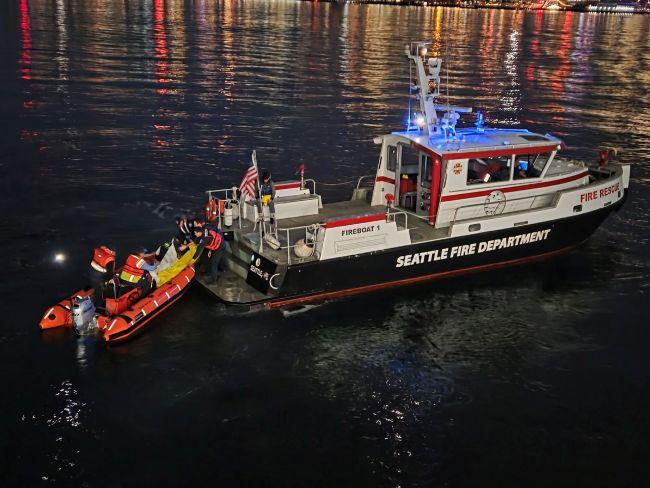
This rescue is a testament to the extensive training our fleet employees undergo to ensure they are prepared in an emergency. All our crew members participate in regular safety drills and emergency response training. This helps them prepare to act quickly in critical moments. Their skills and readiness ensure that everyone on the Salish Sea – passengers, crew or people enjoying the water – is supported and protected. Last Thursday’s rescue is yet another reminder of the teamwork and professionalism our employees bring to everything we do.
Update on Mukilteo/Clinton route weekday cancellations early next year
We now have a rough timeline for construction work affecting our Mukilteo/Clinton route early next year. Nine weekdays of midday sailing cancellations will likely occur during the first two full weeks of January and the first two full weeks of February:
- The last morning sailings will be the 8:30 a.m. out of Clinton and the 9 a.m. out of Mukilteo.
- Service will resume with the 1 p.m. Clinton departure and 1:30 p.m. Mukilteo departure.
During the midday sailing cancellations, crews will make critical repairs to an in-water structure at Mukilteo terminal. Because this terminal has only one slip, ferries cannot run while this work is happening. On the night prior to those nine weekdays, the route’s final roundtrip will be canceled to allow crews to set up for the next day’s work:
- The final sailings will be the 11:30 p.m. Clinton departure and the 12:15 a.m. Mukilteo departure, which will be 10 minutes later than the normal 12:05 a.m. departure.
While midday sailings are paused, a crane will be moved into our Mukilteo slip to drive piles deeper into the sea floor. Weather could change this schedule as we need good visibility for pile driving because work must stop if a protected marine mammal is spotted. We are finalizing the schedule with the contractor and plan to share the exact nine days soon so customers can plan ahead. All work must be finished by Feb. 13, 2026.
Vehicle reservations for winter sailing season open at 10 a.m. Tuesday, Oct. 28
Starting at 10 a.m. Tuesday, Oct. 28, customers can book vehicle reservations for winter travel (Dec. 28 through March 21, 2026). For our Anacortes/San Juan Island route, 30% of capacity on each sailing will be released. On our Port Townsend/Coupeville run, all reservations space (80% for each sailing) will be made available. The remaining 20% is set aside for emergency and stand-by vehicles. Like past sailing season releases, we’ll use a virtual waiting room to keep the website from getting overloaded. This system also helps make sure everyone has a fair chance to reserve a spot. Travelers in the San Juan Islands will see more sailings this winter than in years past. Our fall timetables will stay in place through spring. This single, nine-month “off-peak” schedule comes from community feedback and with support from the governor and the Legislature.
New damaged EV transport rules start in November
Starting Nov. 1, a new policy will take effect for transporting damaged or inoperable electric, hybrid and alternative fuel vehicles on our ferries. These types of vehicles can be dangerous if not handled correctly. They can have battery fires or electrical problems that put passengers, crew and our vessels at risk. To keep everyone safe, only vehicles that are stable and safe – without signs of fire, smoke or electrical problems – will be allowed on board. Tow companies and drivers should complete the WSF Transport Form for Hybrid, Electric, and Alternative Energy Vehicles (PDF 764KB) before arriving at a terminal. They must turn in the form to our staff before boarding. Vehicles showing visible damage, leaking fluids or signs of instability will not be allowed to travel. If approved, the customer will get a blue “Safe for Transit” card to place on the dashboard. Captains have the final say and can deny passage if there are any safety concerns or missing paperwork.
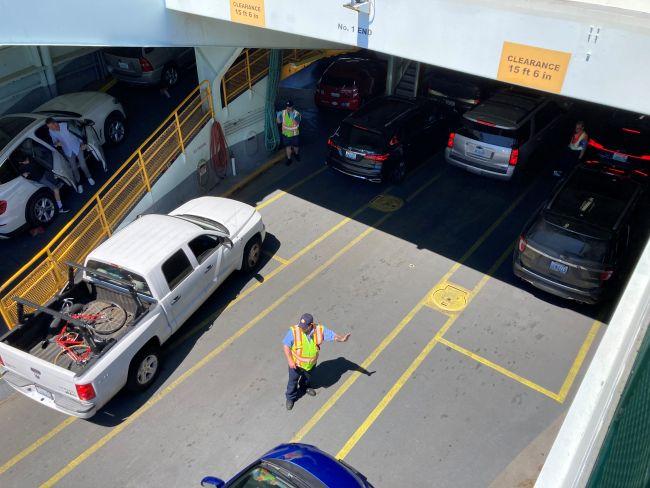
If a fire starts in an EV, hybrid or alternative energy vehicle, our crews use high-volume water hoses to manage the fire. Smaller water sources, like a garden hose or small extinguisher, aren’t strong enough for these types of fires. For small fires that don’t involve the battery, dry chemical or carbon dioxide extinguishers may be used. Our crews don’t cut into vehicles or work near high-power electrical cables. If a vehicle needs to be opened or moved, trained emergency responders will handle it. As a reminder, charging EVs on our ferries or at our terminals is not allowed.
Ferry leaders share ideas on Puget Sound tour
We hosted ferry leaders from around the country on Friday. With many of them in town for the Ferries Conference, the Public Ferry Coalition organized a tour of our operations, along with Kitsap Transit and King County Water Taxi. These visits are more than just a tour. They give us a chance to learn from each other, share challenges and find solutions together. One visitor said seeing our boats and operations in person showed both the differences and the strengths of each system. They said it was a good reminder that, even with big differences, we can focus on what we have in common to work better together.
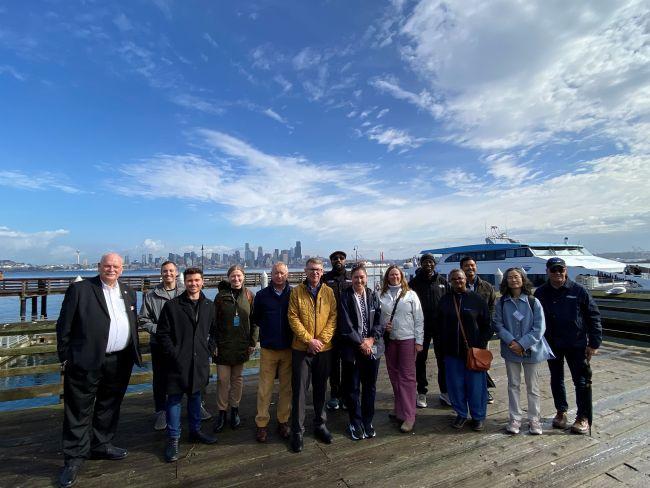
Building BRIDGES for young adults
This week, we’re excited to welcome back students from Seattle Public Schools’ BRIDGES program to our Seattle terminal after a successful trial this summer. BRIDGES stands for Building Real-life Independent Daily Living and Gainful Employment Skills. The program helps young adults with disabilities get ready for life after high school. The 18-to-21-year-old students learn important skills to live more independently and be part of their community. At our Colman Dock, they volunteer with their SPS job coaches, helping customers and discovering what it takes to work at a ferry terminal. This partnership goes through May 29, 2026. Please be patient and supportive when you see these student volunteers. They are gaining skills and confidence for their future.
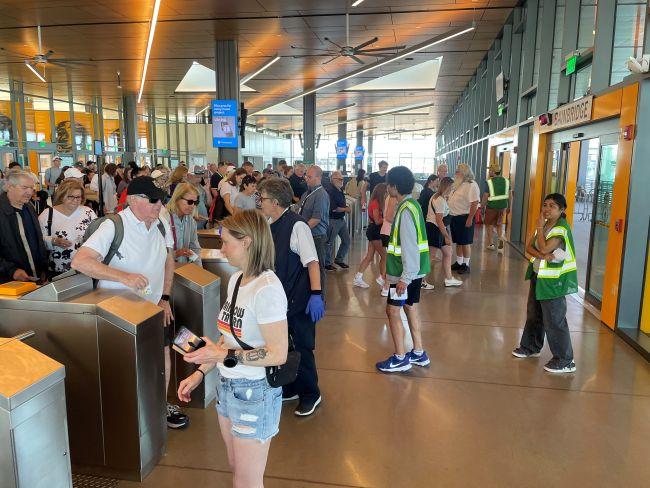
The Great Washington ShakeOut
Last Thursday at 10:16 a.m., we took part in The Great Washington ShakeOut earthquake drill. We live in a region prone to seismic activity, so it’s important to be ready and know what to do. This statewide drill happens on the third Thursday in October each year to help us think about and practice how to stay safe. For our agency, it’s also a chance to plan how we would respond to a big earthquake. Our goal is to keep our transportation system stable so people, goods and emergency services can keep moving. Thank you to everyone who joined in and helped us stay prepared.
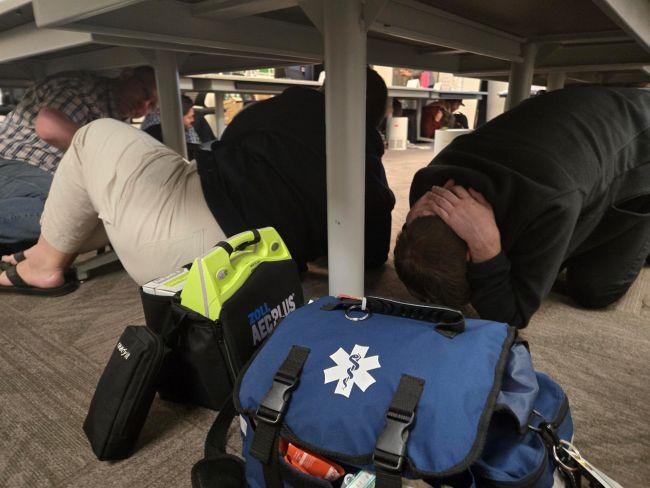
Sailing stats for week of Oct. 13-19
For the week of Oct. 13-19, we completed 98.3% of our 3,059 scheduled sailings. This figure is separate from on-time performance. Of the 53 cancellations, 25 were due to crewing, 21 because of vessel-related issues, four for weather, two due to other miscellaneous reasons and one because of an emergency.
For comparison, during a similar week last year (Oct. 14-20, 2024), we completed 98.3% of our 2,789 scheduled sailings. Of the 48 cancellations that week, 35 were for vessel-related issues, six due to weather, six because of tidal currents and one for an emergency.
Customer kudos
“I just want to share how much I appreciated the efficient and kind help from your employee, (Program Specialist) Zale Noah, who (ensures) your ferry passengers needing Preferential Loading for Medical reasons get what they need to make difficult days easier. It took a couple of attempts to find the right person to help, and I’m so glad it was her. She was able to problem solve getting me the pass this morning, and I don't think I’ve had better attention or service from any WSF staff. You have the right person in the job to help those of us who are having medical challenges, and I hope you take as good care of her as she does of your customers. She’s a gem! thank you Zale.”
-Mukilteo/Clinton route customer
Steve Nevey
WSDOT Deputy Secretary for Washington State Ferries
Slow down – lives are on the line.
Excessive speed was a top cause of work zone collisions in 2024.
Phone down, eyes up.
Work zones need our undivided attention.
It's in EVERYONE’S best interest.
96% of people hurt in work zones are drivers, their passengers or passing pedestrians, not just our road crews.
